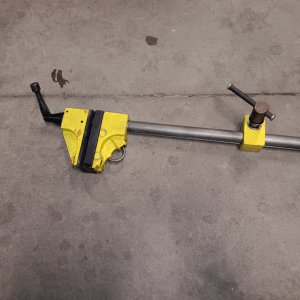I'm a floater, even though I have spun a vise many times from grabbing. I spun a part when I was young that laid my left palm open pretty good. Thin stuff will do it more often than a big bit, so I use a single flute bit for those jobs if I can.
Question, how is floating a vise on the drill press different from its opposite, like when using a big drill motor on stationary work? The work doesn't grab, the drill does... but it's hard to drill holes on big work without going hand-held, and a mag drill isn't suitable for all work all the time.
You know this guy. I know him, too:
View attachment 504651








